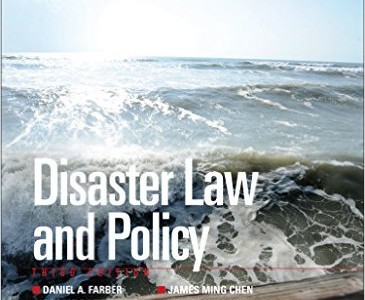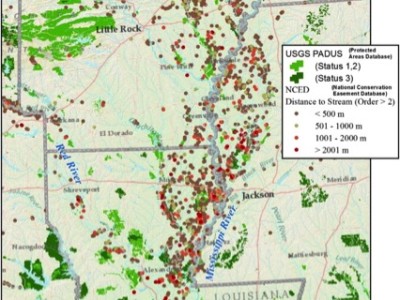Climate Adaptation
How do we move past the yuck factor in potable water reuse?
This post draws on two recently published articles (here and here) by an international group of collaborators: Christian Binz, Sasha Harris-Lovett, Bernhard Truffer, David Sedlak, and myself, courtesy of the ReNUWIt program. Potable water reuse is increasingly seen as a potential way to help ease urban water supply challenges. Potable reuse is as it sounds …
Continue reading “How do we move past the yuck factor in potable water reuse?”
CONTINUE READINGNEWSFLASH: Paris Agreement Adopted
FINALLY, a global agreement to move forward.
The Paris agreement has now been adopted. As the Washington Post reports: “Negotiators from 196 countries approved a landmark climate accord on Saturday that seeks to dramatically reduce emissions of the greenhouse gases blamed for a dangerous warming of the planet. The agreement, adopted after 13 days of intense bargaining in a Paris suburb, puts …
Continue reading “NEWSFLASH: Paris Agreement Adopted”
CONTINUE READINGEmmett Institute updates from the Climate Conference
UCLA faculty and students participating in COP21/CMP11
For two weeks starting today, negotiators gather in Paris for the annual climate-change meetings – officially, the 21st Conference of the Parties to the UN Framework Convention on Climate Change, and the 11th Meeting of the Parties to the Kyoto Protocol (COP 21/CMP11). The meeting is located in a sprawling conference center at the edge …
Continue reading “Emmett Institute updates from the Climate Conference”
CONTINUE READINGA Thanksgiving Day Reflection
Thoughts about the impacts of extreme events and climate change on food security, and hopes for the Paris negotiations
Thanksgiving is a time of gratitude for the food and community we share. But as many of us feast with loved ones today, our gratitude might also prompt reflection about the sources of our food and, more generally, the fragility of the environment. This seems especially appropriate, as Native American tribes are among those most …
Continue reading “A Thanksgiving Day Reflection”
CONTINUE READINGDon’t Blame Canada Anymore
Climate Policy Triumphs Over South Park in New Trudeau Government
We Americans tend to think of Canadians as nice, friendly, well-intentioned folk, a little more left-of-center than the US — sort of what Blue America would be if it didn’t have to deal with the south. For the last 10 years, though, that has been anything but true: the Conservative government of Stephen Harper brought …
Continue reading “Don’t Blame Canada Anymore”
CONTINUE READINGAir quality and wildfire
We may need to burn more to get less smoke
One of the impacts of California’s difficult fire season has been air pollution. Fires produce smoke. Large wildfires produce a lot of smoke. And large wildfires in the southern Sierra Nevada produce smoke in the southern Central Valley – the part of the United States that already has some of the worst air quality in …
Continue reading “Air quality and wildfire”
CONTINUE READINGThe Future of Fire Policy
Climate change will require reconsideration of how we manage fire
It has been a brutal fire season here in California. It’s been brutal in part because of a historically bad drought. But unfortunately, the end of the drought (when it comes) will not be the end of our fire problems. Those fire problems are the result of long-term, human-caused trends that will only continue: climate …
Continue reading “The Future of Fire Policy”
CONTINUE READINGDisaster Law and Policy
A new textbook on the emerging field of Disaster Law.
I’m delighted to announce the publication of the third edition of Disaster Law and Policy. Although I might not normally use this blog to promote a new book, I’d like to think in this case this is more than just shameless self-promotion. That’s for two reasons: the lion’s share of the credit for the improvements …
Continue reading “Disaster Law and Policy”
CONTINUE READINGCalifornia Governor Jerry Brown: Environmental Saint or Sinner?
Brown’s National & International Environmental Reputation Disputed by Some California Environmentalists
California Governor Jerry Brown has had a most eventful 2015, especially when it comes to environmental policy. He started the year fresh from an overwhelming election victory last November, earning him an unprecedented fourth term as California’s chief executive. Brown began 2015 by declaring a state drought emergency and becoming California’s “educator-in-chief,” repeatedly warning state …
Continue reading “California Governor Jerry Brown: Environmental Saint or Sinner?”
CONTINUE READINGCould a Riparian Conservation Network increase the ecological resilience of public lands?
A new article suggests river corridors could leverage existing policies to build habitat connectivity
As we try to protect biological diversity for the future, a perpetual challenge is ensuring that the strategies we adopt today will continue to work in the face of changing conditions. How can we design conservation approaches that will be resilient in the face of environmental challenges that will only become more severe in coming years? …
CONTINUE READING










